|
Can locative media (Augmented and Mixed Reality, web applications, and social networking) serve as a platform for preservation of cultural heritage, informal education, and civic engagement? This is the question at the heart of the Auburn Avenue Research Project, a project that brings together researchers from a variety of disciplines – including media theory, design studies, and human-computer interaction – to engage the above question in theory and practice. 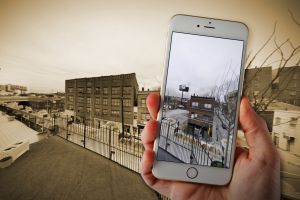 |
Self-sustainable Water Leak Detection System for Buildings |
The System for Wearable Audio Navigation (SWAN) serves as a navigation and orientation aid for persons temporarily or permanently visually impaired. SWAN is in the early stages of a software rewrite and technology upgrade. Interaction techniques are being prototyped in Virtual Reality (VR) to support preliminary user studies of new features. |
This project is based on Janet Murray’s abstraction framework for creating variation in interactive narratives, proposed in “A Tale of Two Boyfriends: A Literary Abstraction Strategy for Creating Meaningful Character Variation.” The project departs from previous iterations examining heterosexual love triangles and centers its focus on lesbian love triangles, with an emphasis on female agency within traditional Western romance narratives. Using this pattern, authors can explore variants in stories and generate parameterized five-act storylines. |
Tactile TeacherLab: In a piano lesson, a student often imitates the teacher's playing in terms of speed, dynamics, and fingering. While this learning model leverages one's visual and even audial perception for emulation, it still lacks an important component of piano playing the tactile sensation. We seek to convey the tactile sensations of the teacher's keystrokes and then signal the student's corresponding fingers. We implemented an instrumented fingerless glove called Tactile Teacher to detect finger taps on hard surfaces. 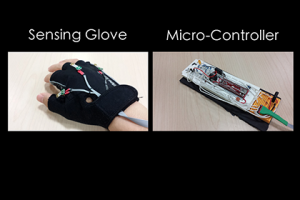 |
“Take Me Home” is a VR experience where the interactor must escape from a post-apocalyptic, underground tunnel. The environment is designed to be a puzzle where the only way out is to manipulate the space using rotational hand gestures. With “Fireflies, Take Me Home”, our research focus is on the creation of impossible spaces in a VR environment. The experience is built for the HTC Vive using Unity. |
This project is focused on designing a tangible and auditory periodic table educational tool for visually impaired and sighted students. |
MagCubes Lab: When brought together the 3d printed cubes adhere and maintain contact when moved. The cubes exhibit nonpolar behavior attaching in any face to face orientation and do not rely on indexing features. This allows users to easily and rapidly create massing models which can take a wide variety of forms, be quickly and repeatedly reconfigured, and be moved as a single unit. 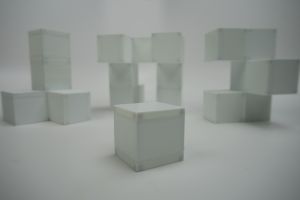 |
|
Spatial ability has been shown to be significantly correlated with interest and success in STEM fields. It also has been linked to an embodiment in different ways. Tangible and embodied interfaces have been shown to support embodiment, including linking embodiment to changes in spatial ability. However, little research has linked the interaction design elements of tangible and embodied interfaces to specific effects on spatial cognition. 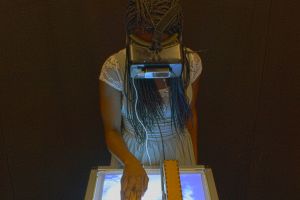 |
Tech Hustle is a project to build upon indications from earlier project, Glitch. Glitch found that many low-income African American male high school students were more willing and able to engage in computer education when it was situated in an authentic work environments. The high school students in this previous work exhibited pride and excitement in being responsible workers, making their own money, and used work as a way to justify time spent on learning computer science and other more academic pursuits. 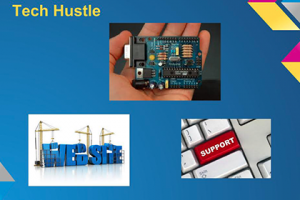 |
As the COVID-19 pandemic causes models of healthcare to rapidly shift and as it introduces widespread economic and social stressors, there is a vital need for innovations that help expecting women and new mothers manage their mental health. We take a mixed methods approach to examining pregnant and postpartum Black women in the US focused on understanding how technology can support their mental health concerns during the pandemic.  |
|
|
Parents and children work together in museums and other informal learning settings to make meaning of the world around them. The parent-child conversations, the child's interests (islands of expertise) and the surrounding technology influence the overall informal learning experience. We conducted two studies at the Children's Museum of Atlanta to better understand the interplay amongst those conversations, child's interest, and technology. |
TechSquareARLab: TechSquareAR is an Augumented Reality application developed as an aid to visualize massing model of CODA building site in conceptual stage. 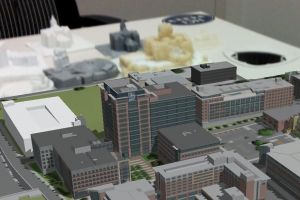 |
Multimodal Sensing to Model Individual Differences and Job Performance at Workplaces |


